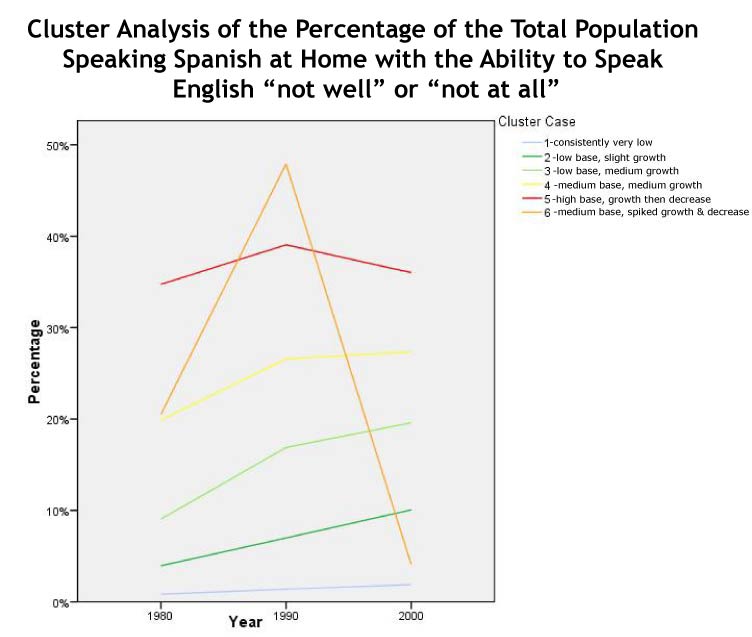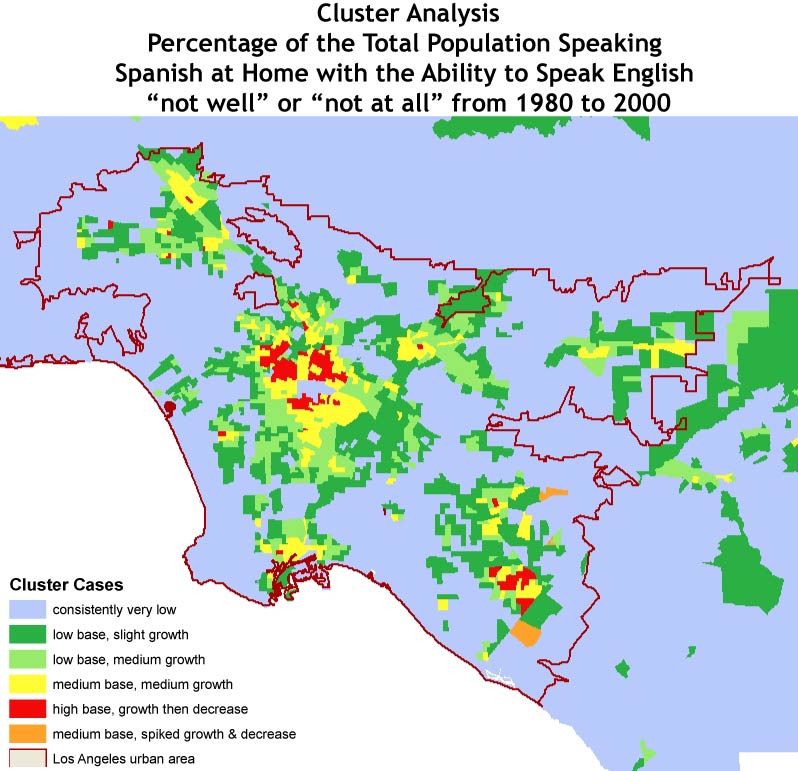When observing the high growth of Hispanic populations—especially in an immigrant city like Los Angeles—an important correlating variable is that of language proficiency. Levels of educational attainment and class of worker are then further related to or are consequences of an immigrant’s proficiency of English. With the extremely high percent Hispanic populations in certain areas of the city, many households, families and individuals speak only Spanish at home or among each other, while achieving competence in English can take a back burner. Within communities, this reliance on native language of immigrants and their children may work out, but individuals hoping to reach beyond the community to attain a higher-level education or enter a more challenging job market find themselves with even more difficulties than most.
This cluster analysis chart and map display clusters of the population noted in the census as speaking Spanish at home and with the ability to speak English “not well” or “not at all” from 1980 to 2000. Notice that the graph scale only reaches 50% in order to display the trend lines most effectively.


Notice the clusters of red, yellow and orange here displaying up to 20, 30, or 40% of the total population with decidedly low proficiency in the English language. It is also significant to note the clusters in these maps as they relate to the previous page’s clusters of high Hispanic population. These highly correlating areas can show neighborhoods of very dense Hispanic population, especially immigrant families, who keep to their own communities and native language.